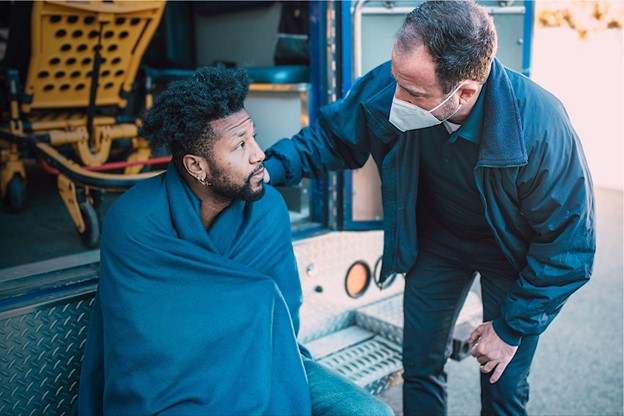What Is Community Response?

The term “community response” refers to a system of coordinated support and services for both youth and adults aimed at preventing unnecessary incarceration, hospitalization, or entry into child welfare systems. These programs use evidence-based strategies to address public safety, justice reform, community behavioral health and social needs before they escalate into emergencies.
Community response programs focus on connecting individuals to treatment for mental health and substance use disorders while also providing access to basic needs such as housing, food, and employment services.
Common Community Response Programs and Roles
Here are a few examples of community response model programs:
Crisis Intervention Teams (CIT)
CIT programs improve law enforcement interactions with individuals experiencing mental health crises. Officers receive specialized training to de-escalate situations and connect individuals to appropriate services.
Behavioral Health Crisis Response Teams (e.g., Alternative Response, Co-Responder Programs, Mobile Crisis Teams)
A team of professionals pairing mental health professionals with law enforcement or EMS to respond to behavioral health crises. Models vary, though the primary goal is immediate stabilization and service connection rather than arrest or hospitalization.
Homeless Outreach Programs
Engage individuals experiencing homelessness, offering referrals to housing, healthcare, behavioral health, and social services.
Substance Use and Addiction Recovery Programs
Provide support for individuals dealing with substance use disorders, offering counseling, recovery planning, and connections to treatment services.
Youth Diversion Programs
Designed to divert young people from the criminal justice or social services system, these programs provide structured alternatives such as mentoring, counseling, and restorative justice practices.
Community Policing Programs
Emphasize building trust between law enforcement and community members through proactive engagement and collaborative problem-solving.
Public Health Outreach and School-Based Programs
Embedded in schools and public health departments, focus on early intervention, mental health support, anti-bullying efforts, and partnerships with law enforcement to create safe and supportive environments.
Law Enforcement Assisted Diversion (LEAD)
Divert individuals engaged in low-level, non-violent offenses—often related to substance use—away from jail and into treatment and social services.
Naloxone Plus and Overdose Response Programs
Combine overdose reversal (with naloxone) and rapid connection to treatment and recovery support.
Violence Prevention and Human Trafficking Response Programs
Identify at-risk individuals and intervene before violence or exploitation occurs, providing support and connection to appropriate services.
The Growth of Community Response
Community response has become one of the fastest-growing areas of law enforcement and public health collaboration. New roles and programs are emerging rapidly. Despite the relative infancy of these concepts—many of which have only developed over the past 10 years—more than 1,000 communities nationwide now provide some form of deflection or community-based crisis response services. According to estimates, nearly 3,000 communities offer crisis intervention training to law enforcement and first responders.
ARETGroup Co-Responder
ARETGroup Co-Responder is a human services data management platform designed for municipal, justice, law enforcement agencies, and behavioral health professionals working in government and community response settings. ARETGroup Co-Responder is purpose-built to track daily operations, field encounters, and case outcomes.
Our complete suite of community response solutions includes:
Crisis Intervention Team Assessment (CITASSESS)
